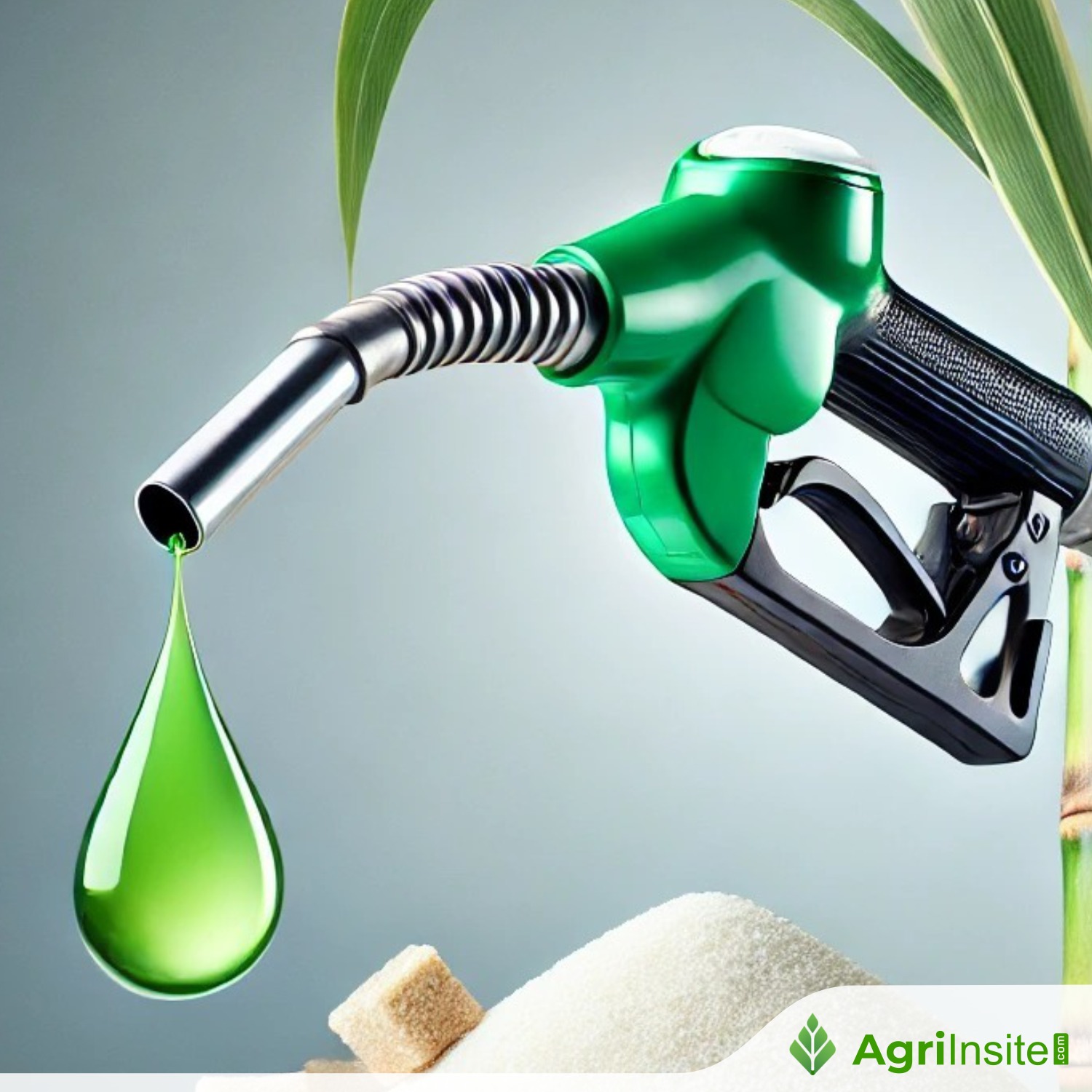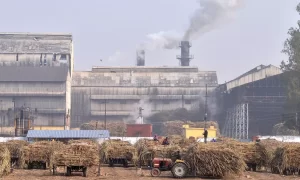Sugar Output drops 18%, but Sector eyes Ethanol-led Revival

India’s sugar output fell 18.38% to 258.20 LMT in the 2024–25 season, but hopes remain high due to southern recovery and strong ethanol blending. Karnataka and Tamil Nadu saw increased off-season crushing. Ethanol blending hit 20%, five years ahead of target. Policy shifts and distillery approvals may support the sector, with 2025–26 output projected at 350 LMT.
India’s sugar output has declined sharply in the 2024–25 season, with production falling by 18.38% to 258.20 lakh metric tonnes (LMT) as of July 31, 2025, compared to 316.35 LMT last year, according to the National Federation of Cooperative Sugar Factories Ltd. (NFCSF). Despite this dip, the sector remains hopeful due to improved crushing in southern states and a major push in ethanol blending.
Karnataka and Tamil Nadu, which conduct a special off-season crushing during June to September, have shown a slight recovery. Seven mills in Karnataka and nine in Tamil Nadu were operational by the end of July, compared to just one and eleven respectively last year. With their continued output, the season is expected to close around 261 LMT.
However, ex-mill sugar prices, which hovered around Rs 3,900 per quintal post-export quota announcements, have been falling since mid-May. NFCSF expects the festive season demand to provide much-needed price stability, critical for mills’ off-season maintenance and operational planning.
A major positive development this year is India achieving 20% ethanol blending with petrol, five years ahead of its original 2030 target. NFCSF has hailed this as a significant milestone in the country’s energy diversification and rural development strategy.
Ethanol blending has grown from just 1.5% in 2014 to 20% in 2025, showcasing rapid progress. Out of the 700 crore litres of ethanol supplied so far, 38% has been sourced from sugar-based feedstocks and 62% from grain-based sources. This signals a positive diversification trend, although NFCSF warns that long-term sustainability of sugarcane-based ethanol needs to be closely monitored.
The sector is also witnessing major policy shifts. NFCSF President Harshvardhan Patil welcomed the newly launched National Cooperation Policy 2025, which aims to triple the cooperative sector’s GDP contribution by 2034, establish cooperatives in every panchayat, and expand into areas like green energy, tourism, insurance, and transport. Formulated after 17 rounds of consultations, the policy outlines 83 actionable reforms, many already under implementation.
In a significant state-level move, the Maharashtra government has approved multi-feed distilleries across the state, aligning with the National Bioenergy Policy. These distilleries will allow sugar mills to use various feedstocks, aiding ethanol production. Cooperative mills can also access benefits under the ethanol interest subvention scheme.
Looking ahead to the 2025–26 season, NFCSF is optimistic. A favourable monsoon, expanded cane acreage in Maharashtra and Karnataka, and a timely hike in Fair and Remunerative Price (FRP) could drive sugar production up to 350 LMT.
However, with rising health consciousness reducing per capita sugar intake, NFCSF urges the government to revise ethanol procurement prices, raise sugar’s Minimum Selling Price (MSP), and permit exports to manage surplus and safeguard mill viability.
To Read more about Sugar Industry continue reading Agriinsite.com
Source : Indian Cooperative














